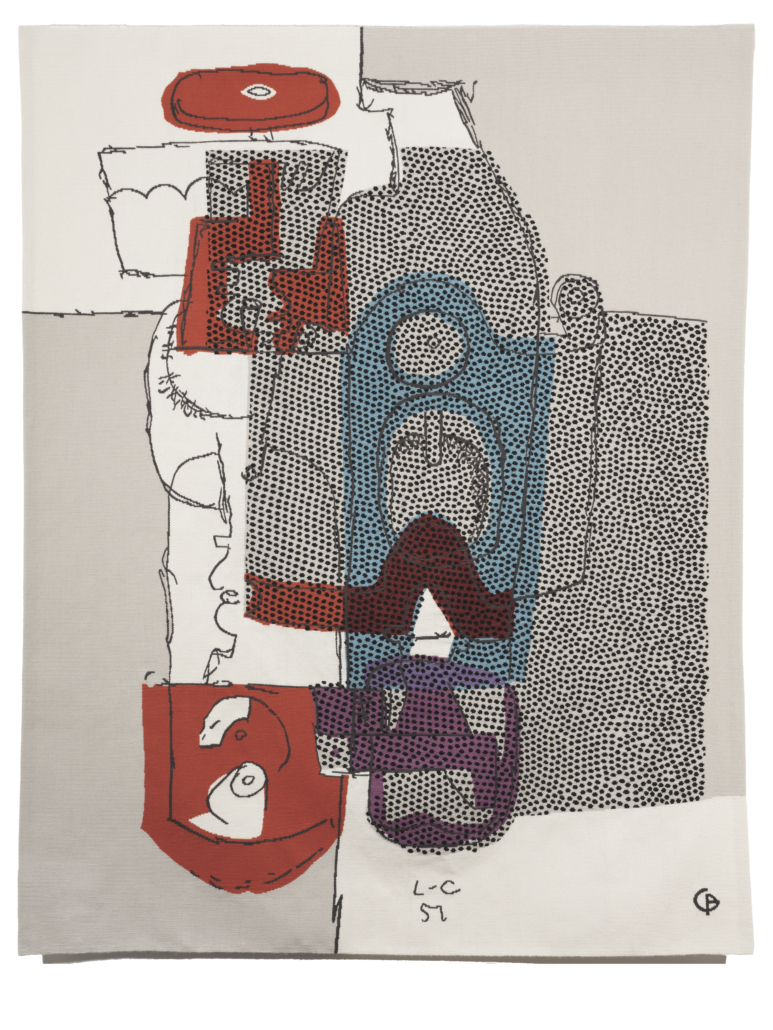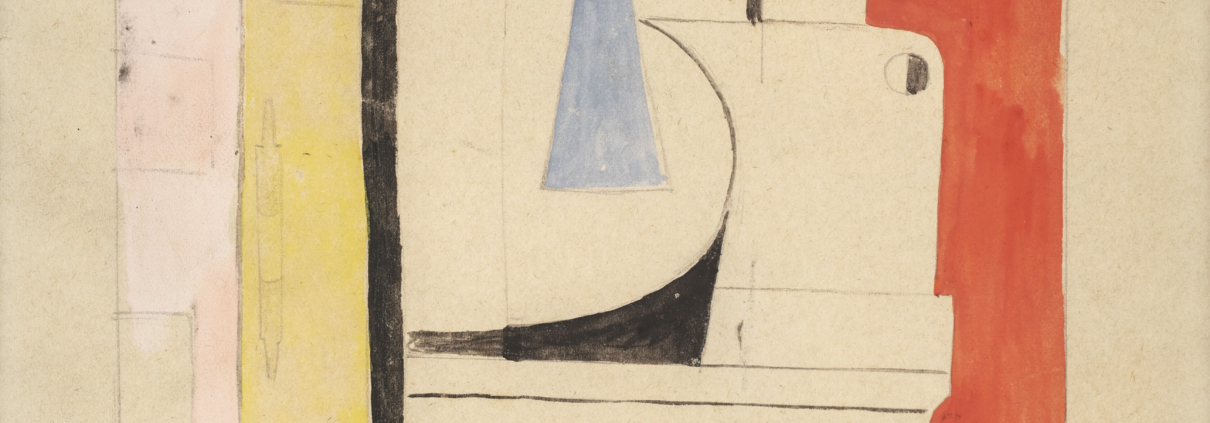PURISME(S)
Willi Baumeister – Marcelle Cahn
Otto Gustav Carlsund – Franciska Clausen
Le Corbusier – Amédée Ozenfant
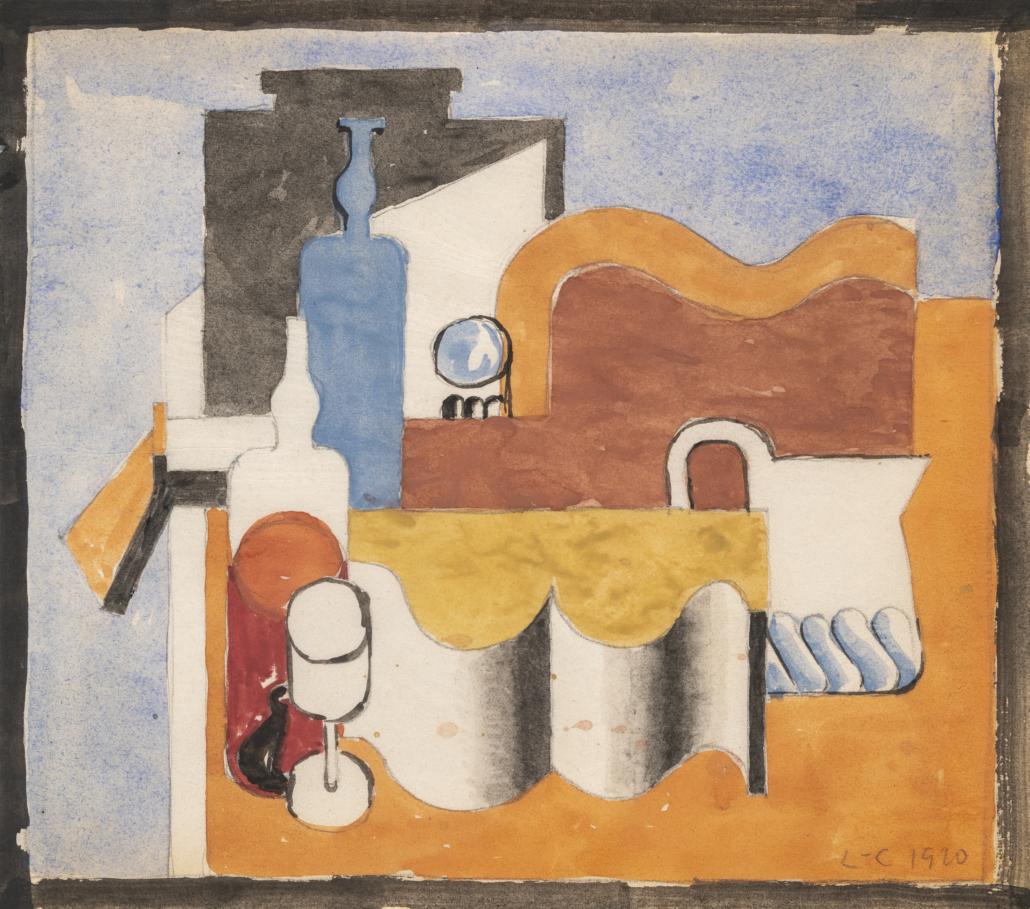
Purism emerged as a reaction to Cubism, which Le Corbusier and Amédée Ozenfant admired for its modernity, but which they felt had become abstruse and sometimes decorative. Rigorous and austere in theory, a true precursor of conceptual art, Purism unfolded through a formal repertoire, favoring the representation of standardized objects: glasses, bottles, pitchers, and compote dishes, with the aim of capturing their very essence: ultra-legible representation, respected proportions, shared contours, diligently drawn lines, and a questioning of the codes of perspective. According to Le Corbusier and Ozenfant, a new aesthetic must emerge with the simplification of objects and the quest for functionalism. Science then constituted the fundamental breeding ground for their aesthetic, with art having to rigorously reveal a form of higher truth. The movement is part of the avant-garde movements of the time, like the simultaneism of Delaunay, Bauhaus or constructivism, with the aim of creating a new language.
Envoyer
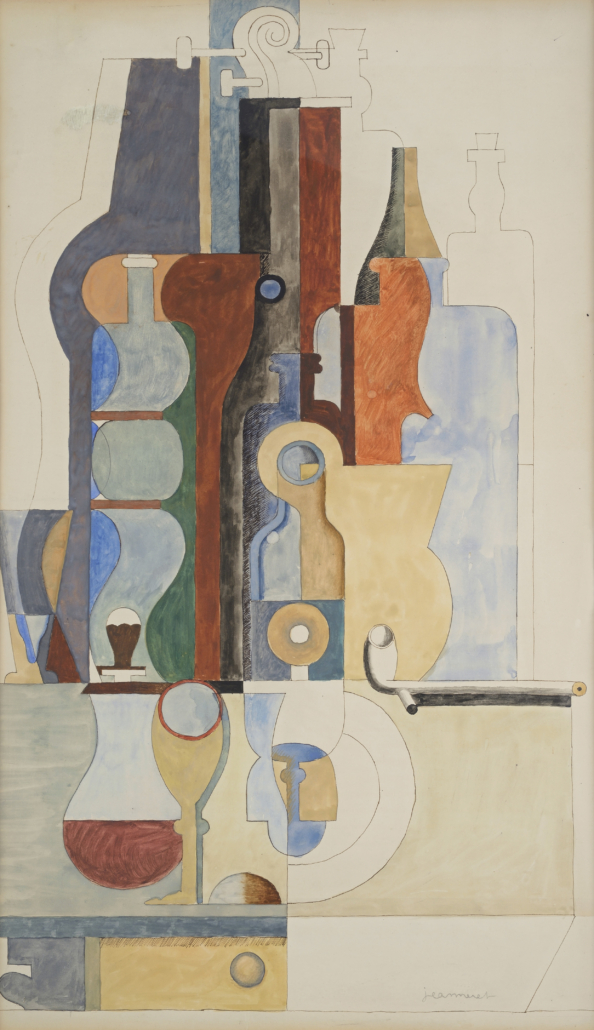
The exhibition’s first figure, Le Corbusier, began his artistic career with purist compositions: paintings, gouaches, and drawings that perfectly embody the core of his purist practice are featured in the exhibition. Even after his break with Ozenfant, Le Corbusier continued to create object compositions throughout his career. This short but crucial stage in his artistic development had a profound impact on him. Each decade, he returned to purism by incorporating his current formal concerns, notably by renewing his color palette. This section, composed of later works, is shown at the Galerie Pascal Cuisinier. He also used purist compositions to explore diverse mediums, such as tapestry, which he particularly favored.
It was Amédée Ozenfant who, upon their meeting in 1917, introduced Charles-Edouard Jeanneret (the future Le Corbusier) to Cubism, explained his views on Purism and taught him painting. Mentor, teacher and professor, Ozenfant produced purist works most in line with the principles he had forged. Pictorial research was carefully thought out in advance, prior to the execution of the gouaches and the final paintings. Ozenfant’s still lifes are characterized by an ultra-synthetic style of representing objects, which are reduced to the simplest geometric forms.

Beyond its two inventors, the exhibition examines Purism’s ability to attract artists of diverse backgrounds and reputations, sometimes beyond France’s borders. Although intellectual and conceptual, the movement was in tune with the real world, then marked by the phenomenal advance of progress. The production of standardized objects, functional architecture, urban transformations, and the renewal of transport permeated Purist works. Since then, the movement has attracted a significant number of French and international artists. Each of them has produced a personal Purism, which has often broken free from the precepts of its founders. Franciska Clausen, a Danish artist, enrolled in the Académie Moderne of Fernand Léger and Amédée Ozenfant in 1924 and, during her stay in Paris, produced works inspired by Purism. She was one of the most original participants in the movement, adding a surrealist touch, painting sensual and dreamy compositions that included the human body, which she positioned next to floating objects.
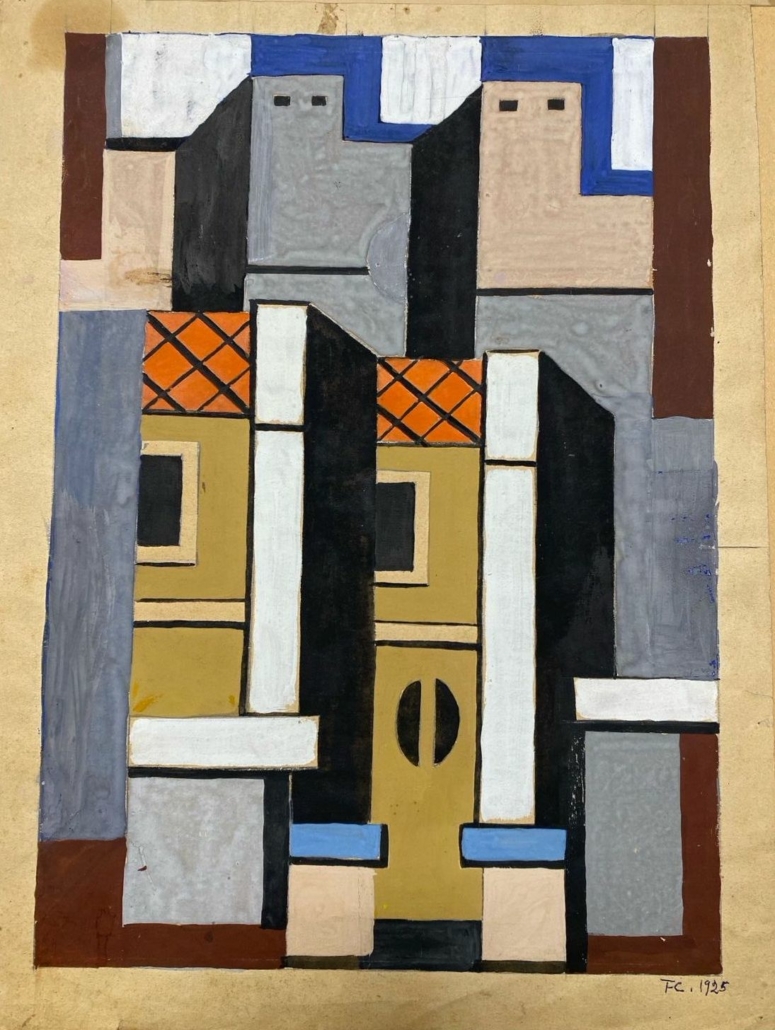
Marcelle Cahn was also an active participant in the movement, with a career parallel to that of Franciska Clausen. A student of Fernand Léger and Amédée Ozenfant at the Académie Moderne in the mid-1920s, she created compositions in which she incorporated more dynamic elements than other artists of the movement. She was attentive to the body in motion, particularly to means of transport (the tram, boats). Her approach to purism, celebrating the geometry of objects or the human body, foreshadowed geometric abstraction, of which she would become one of the major figures of the post-war period.
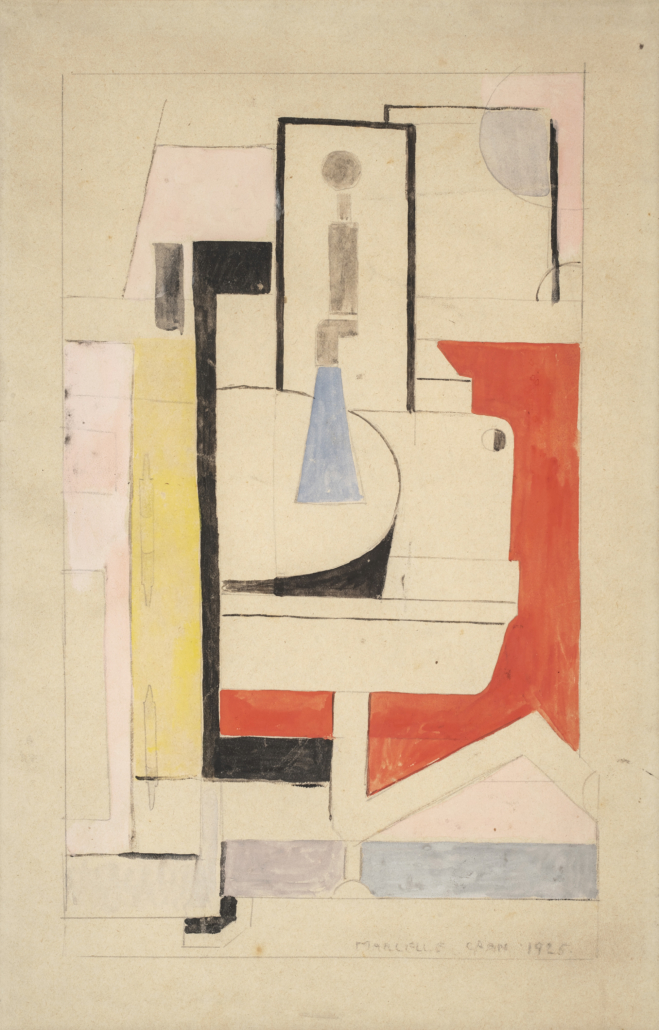
Otto Gustav Carlsund, a Swedish artist, joined the Académie Moderne in 1924 (studio of Fernand Léger and Amédée Ozenfant). He met Le Corbusier, then Mondrian. With Van Doesburg, he participated in the creation of the Art Concret group in 1930. A painter, creator of murals, and also an art critic, he played an important role in introducing the avant-garde movements to Scandinavia.
Finally, Willi Baumeister, one of the most prominent avant-garde artists of the 20th century, produced works in the 1920s that were very close to the concerns of Purism. The two founders of the movement paid tribute to him in their journal, L’Esprit Nouveau, quoting him and reproducing his works. Baumeister recognized a real affinity with the French avant-garde movements that emerged after the First World War. He admired Purism’s ability to combine a solid theoretical framework with dynamic production. Baumeister creates legible compositions in which simple geometric shapes are interconnected and form a whole. However, he draws inspiration from his machinist style for compositions in which the object is decomposed. In doing so, he approaches abstraction.
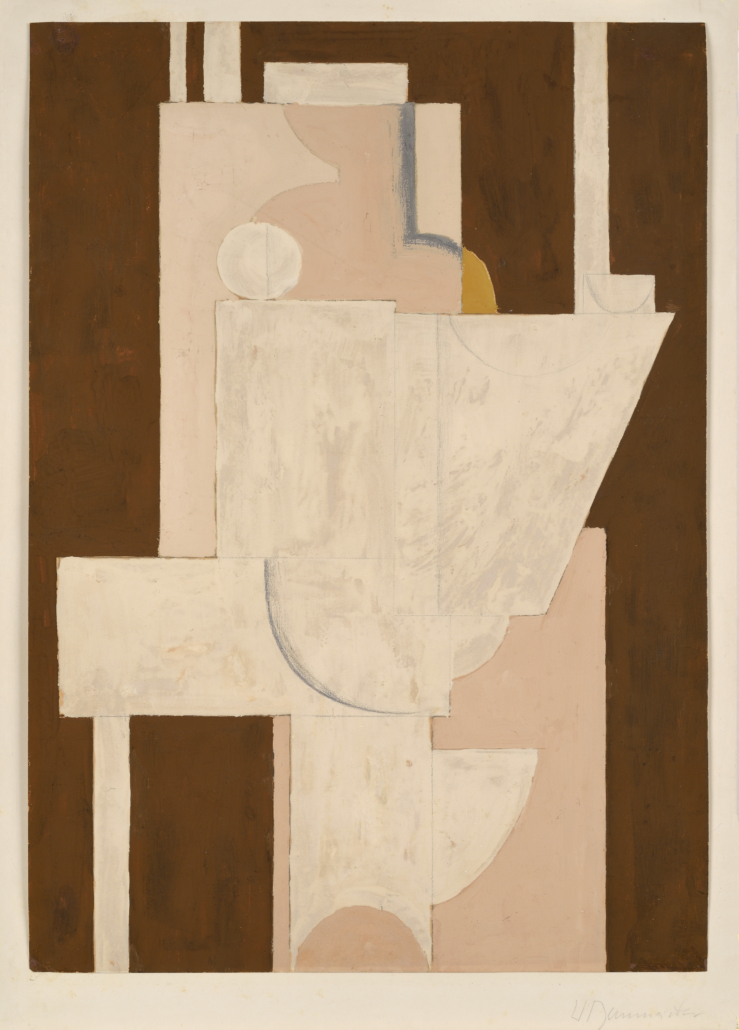
Despite the fruitful relationships between these and many other creators, Purism has sometimes been considered a stifling straitjacket. Ozenfant and Le Corbusier broke up in 1925, the latter in search of sensuality and personal freedom that Purism did not allow him. Perhaps too demanding, the movement faded into the background in favor of abstraction and Surrealism, which flourished in the early 1930s. Through its quest for asceticism, its brief but intense duration, its utopian ideal, and its absolute desire to capture the essence of things, Purism is one of the most remarkable precursors of Conceptual art.
A catalog, with texts by Cécile Godefroy, Éric Mouchet, and Michel and Yves Zlotowski, published by Éditions Martin de Halleux, accompanies the exhibition. The section dedicated to Le Corbusier’s post-purist works is exhibited at the Galerie Pascal Cuisinier, at 13, rue de Seine.
